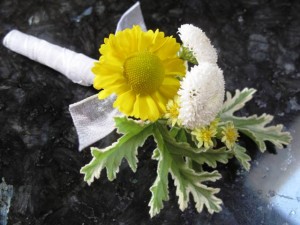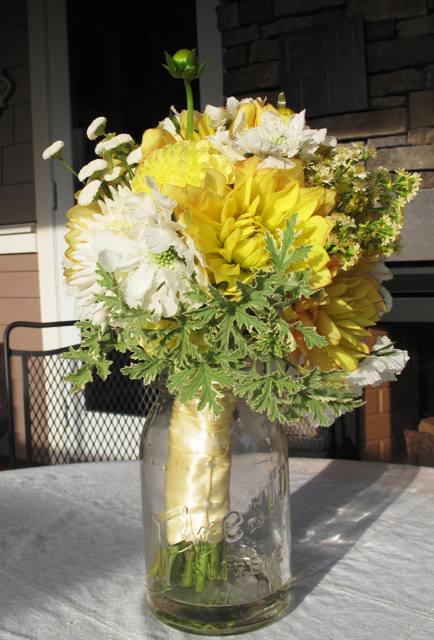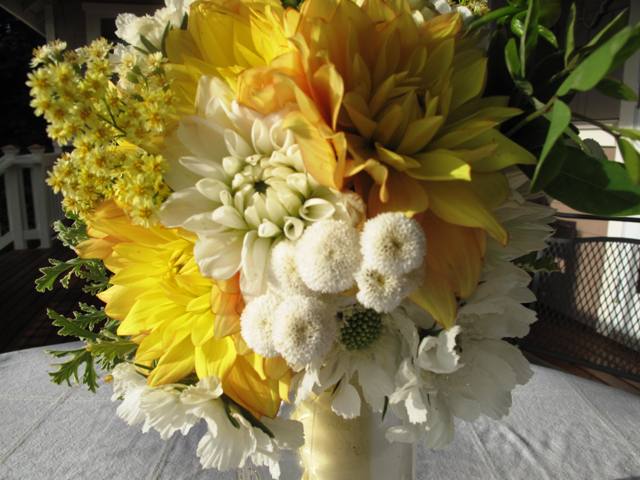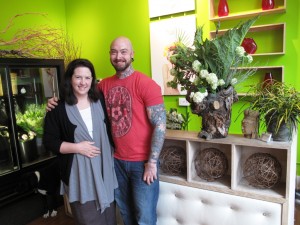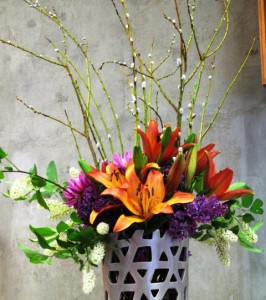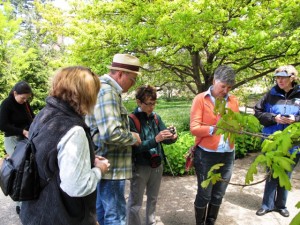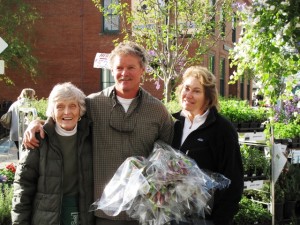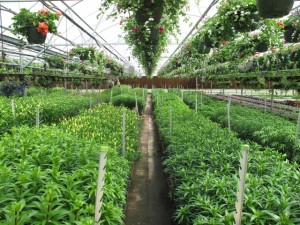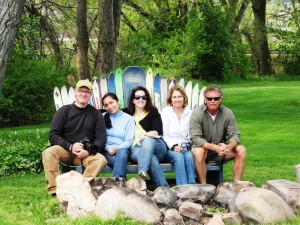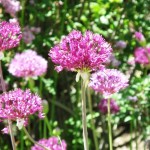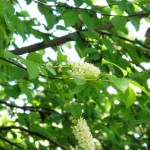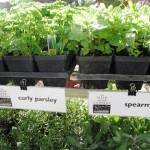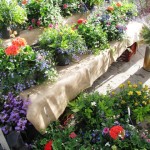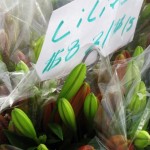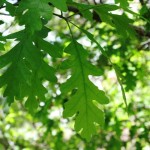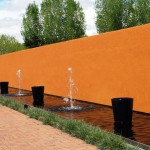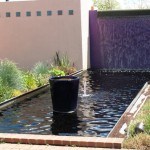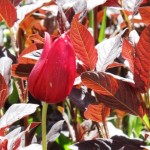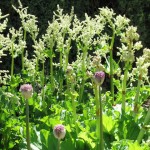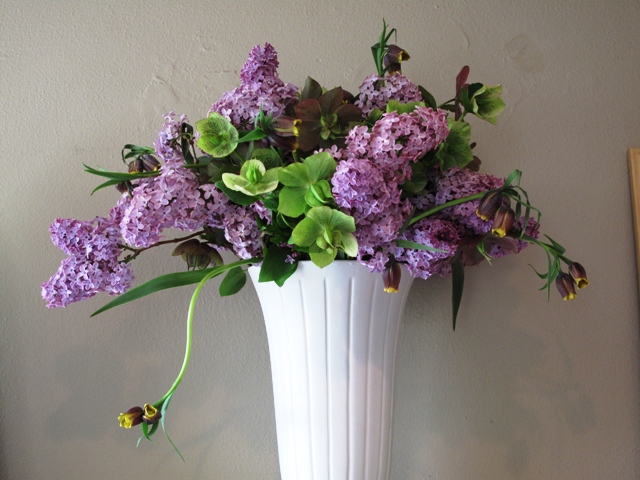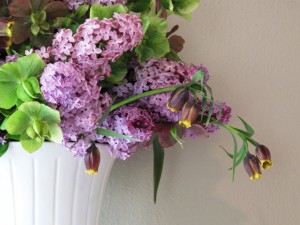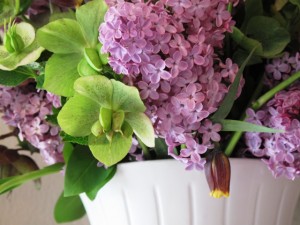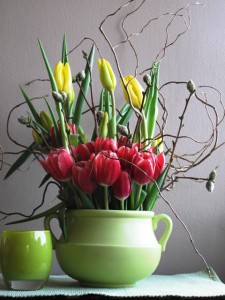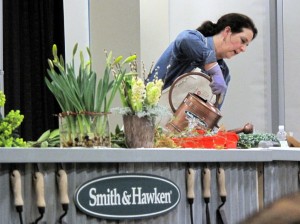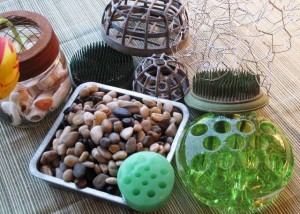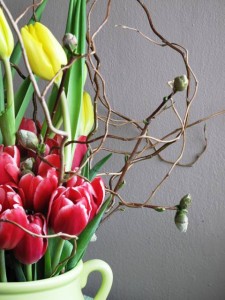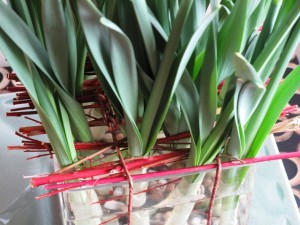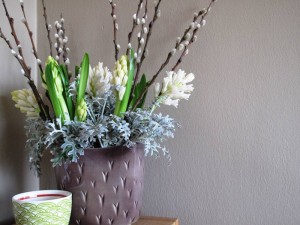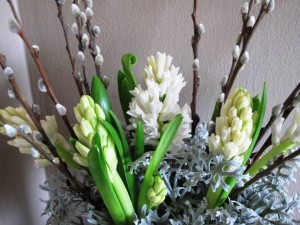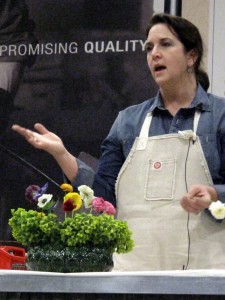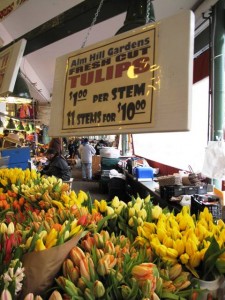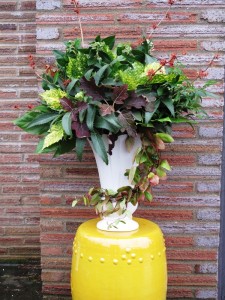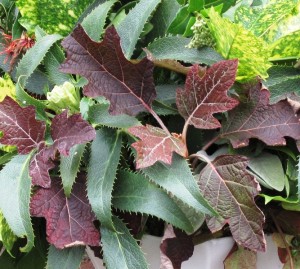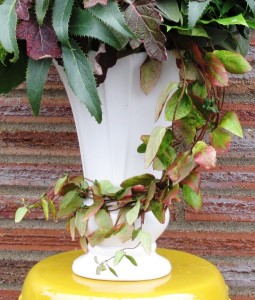My niece Marquis is marrying her sweetheart Rashad next month and Aunt Debby volunteered to design the flowers. Marquis’s color palette is soft yellow and white, which at first I thought would be a little too simple or possibly limiting in the floral options.
However, after we visited our favorite local flower farmers and saw all the wonderful options, I have a new-found love of the color combination.
As partners in a vase or bouquet, yellow and white flowers are simply romantic! Marquis asked that I use more yellow ingredients in her bouquet so it will be more visible against her white dress; the bridesmaids will have more white ingredients in their bouquets – which will show off against their pale yellow dresses. Great idea!
With amazing fresh, seasonal and locally-grown ingredients from Jello Mold Farm, J. Foss Garden Flowers and Oregon Coastal Flowers, I made the samples this week so Marquis could see how the designs would look . . . and to help me figure quantities of stems. Here is a sneak peek – I think they are absolutely summery and joyous, just what you want for a wedding:
Ingredients include: White scabiosa with pale green centers (pincushion flower), two types of white dahlias – ‘Bride-to-Be’ and ‘Little Lamb’; two types of yellow dahlias – ‘Nettie’ and ‘Candlelight’; feverfew (the little white buttons, actually Chrysanthemum parthenium); yellow sprays of solidaster for a soft touch; and variegated scented geranium foliage from my garden. The solidaster is a hybridized cross of a goldenrod (solidago) and aster. So if it’s not still growing next month, we’ll substitute regular goldenrod, which will create the same dreamy affect.
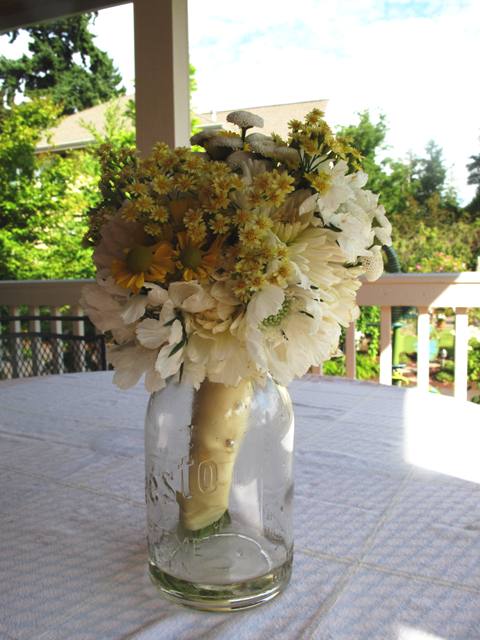
Here's how the mostly-white bridesmaid bouquet looks - it's also about one-third smaller than the bride's bouquet.
Finally, the centerpieces. We are going to use the same shallow glass Ikea bowls that created the centerpieces for Marquis’s sister’s wedding receiption last spring. But this time, instead of floating orchids and candles, I thought about creating a “nest” out of curly willow around the inside rim. The center will have a stunning floating dahlia, like ‘Snowbound’, the dinner-plate-sized one shown here. And I’ll weave smaller yellow flowers into the willow. Today, I played around with helenium, just to see how it looks.
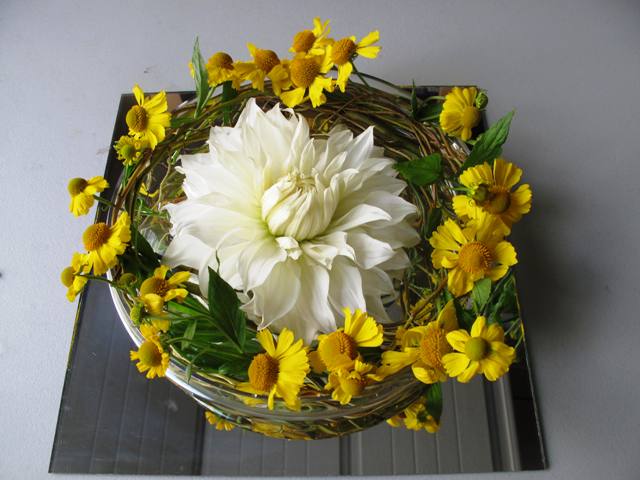
The low glass bowl is filled with curly willow, yellow heleniums and one dinnerplate dahlia - in white.
You know, this floral design focus of mine has been really rewarding, both as a storyteller and garden writer. But there’s one really wonderful surprise that has come out of the four years I’ve spent working with photographer David Perry to document the local, seasonal and sustainable flower movement (see our blog, A Fresh Bouquet, for lots more details).
It has begun to dawn on me that I am a creative individual and I love to design and arrange with cut flowers. And while I am totally self-taught, I am actually good at it. I contend that gardeners are the ideal people to be floral designers. We know the habit, form and life-cycle of the ingredients we use, which is more than one can say for some in the conventional florist world. And so I am ever grateful for the opportunities I am given, like my niece’s upcoming wedding, to move my hands off of this keyboard, pick up a pair of snips – and begin to create.









